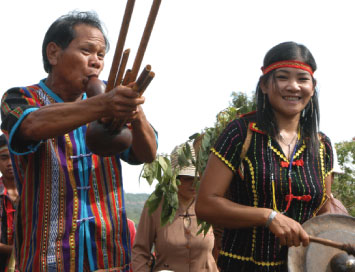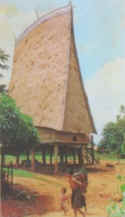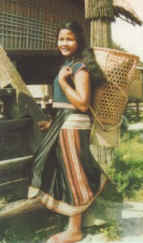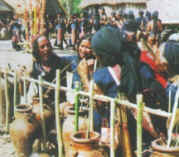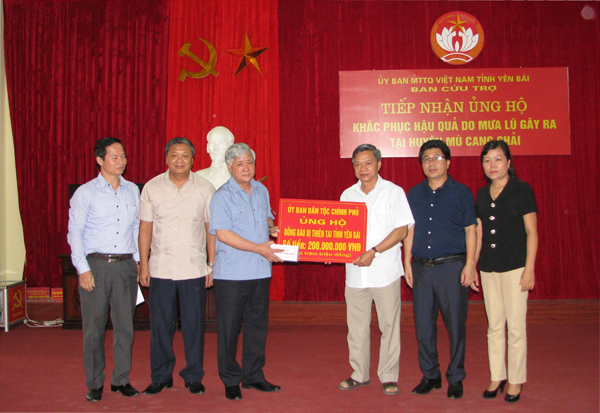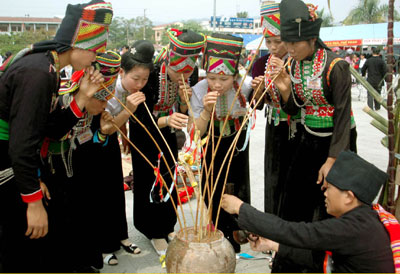The Ba Na
02:59 PM 21/01/2016 Views: 5671 PrintThe Ba na have a population of more than 136,000 inhabitants settling in Kon Tum province arc western pans of Binh Dinh and Phu Yen provinces. The Ba na are also called To Lo, Gio Lang, Y Lang, Ro Ngao, Krum, Roh, Con Kde, Alacong, Kpangcong and Bo Mon. Ba na language belongs to the Mon Khmer Group.
The Ba na live mainly an cultivation of burnt-over land which brings them rice, subsidiary crops, vegetable, fruit, sugarcane and cotton for cloth weaving. Apart from burnt-over land cultivation, the Ba na rear cattle, poultry, pus and goats. Dogs are their loved animals which never be killed. Almost the villages have forges. In certain places, the Ba Na have produced simple potteries, women weave cloth to make their family dressing. Men practise basketry and mat-making. The Ba na often barter goods for goods that the value is defined by barter objects such as cocks, axes, baskets of paddy, pigs or copper pots, jars, gongs and buffaloes.
The Ba na live in houses on stilts. In the past, the elongated house were popular in accordance with the extended families. Now there exists the short houses containing small families. In each village, there is a communal house called rong which stands out for is height and beauty. It is the centre of cultural activity for the village community, the place for the old men gather together to discuss public affairs, for receiving guests and performing rituals and ceremories and for unmarried young men and widowers sleep through nights.
According to matrimonial custom, a young man and woman can each take the initiative in marriage, parents involving them- selves only to ensure respect for traditional principles. After marriage, the young couple live alternately in both their parents' families with an interval arranged by the two families. After the birth of the first child, they are allowed to set up their nuclear family. The children are always treated with kindness arc consideration. The persons living in a village are never given the same names as others. In case the persons who bear the same names meet one another, they will hold a ceremony for fraternization and define hiearchy according to age.
The Ba na children have the equal rights of inheritance. The members of a family live in equal and on the best of terms with one another.
The Ba na venerate the spirits relating to human being. Each spirit has proper name going after pronouns called boc ( Mr...) or da (Mrs...). In their concepts, the deceased turns into the soul, firstly the soul remains in the village cemetery, then it comes to the ancestral land after the ''grave abandoning" ritual. This ritual is the last farewell to the deceased.
The Ba na have a rich literary and artistic heritage including folksongs and unique dances performed at festivals and religious rituals. Musical instruments are diversified with sets of gongs of various combination, t'rung xylophone, bro, klong put, ko ni, khinh khung, go-ongs stringed zithers and to not, arong and to tiep trumpets. The aesthetic sense of the Ba na is expressed in their unique wood-carvings, in the extraordinary decorations an their communal houses, in particular the carved statues arranged in funeral houses, all which reflect aspects of a vivid life of the Ba na.

